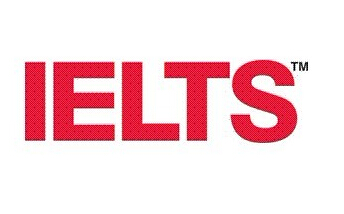坐车比走路吸入更多污染物
2011-12-29 00:00 供稿单位: 互联网
出国英语考试有哪些 雅思6.5是什么水平 雅思阅读评分标准 托福阅读评分标准 雅思和托福的区别
摘要:
在面对道路空气污染的问题上,选择坐车或走路等不同的出行方式会带来不同的结果。英国科学家的一项研究显示,坐车的人会比骑车和步行的人吸入更多的污染物质。
Passengers in taxis, buses, and cars all inhale substantially more pollution than cyclists and pedestrians, a new study shows.
在面对道路空气污染的问题上,选择坐车或走路等不同的出行方式会带来不同的结果。英国科学家的一项研究显示,坐车的人会比骑车和步行的人吸入更多的污染物质。
据美国“生活科学”网站1月16日报道,上述研究结果显示,人们乘坐出租车、公共汽车及私家车出行时,吸入的污染物质都要比骑车或走路时吸入的污染物多。
英国研究人员使用一种新开发的微粒计数装置并配备一台录像机,对伦敦一些繁忙街道上因来往车辆而产生的污染物微粒水平进行了测量。这一装置可以使研究人员得知上述5种出行方式中,每一种方式所接触到的微粒水平。而且,他们还能鉴定出何种活动及行为会导致人们接触到数量最多的污染物质。
研究人员发现,平均来说,出租车乘客处于每立方厘米超过10万个超微颗粒的环境中;公共汽车乘客处于每立方厘米不到10万个超微颗粒的环境;而私家车中的人所处的环境为每立方厘米4万个超微颗粒。与此同时,步行者和骑自行车的人所处的环境分别是每立方厘米5000个和8000个超微颗粒。
报道说,因为超微颗粒体积很小,所以人们一次呼吸就可以吸入大量这种物质。进入人体后,超微颗粒就会“入侵”肺部,并对细胞造成损害。
在美国纽约或其它一些大城市,上述结论是否也仍然成立呢?对此,研究人员之一、伦敦帝国学院的瑟布伊特·考尔表示:“我们在不同的国家里通常都会发现这种倾向,如步行者接触到的污染物最少,而乘车者接触到的污染物却要高很多。”“然而,污染物的浓度却因当地诸如交通、气象、建筑物布局及结构等不同情况而有所变化。”
乘客和步行者为何会处在不同程度的污染环境下呢?研究人员说,交通繁忙时,车中的乘客会直接受到污染源——其它车辆回气管的影响。而私家车中的人受到的污染之所以较其它车的乘客少,很可能是由于,一般来说私家车比出租车和公共汽车处于交通流动中的时间更短一些。而且,私家车往往也更加干净。
而骑车的人往往主要行驶在远离路中央的车道上,因此吸入的污染物也就相应少很多。行人更是如此。
研究人员还告诉人们在繁忙的大都市里行走的位置。考尔建议人们,尽量要靠近建筑物行走,因为在那里接触到的污染物质会比靠近路边人行道接触的污染物少将近10%。
报道说,这一研究被发表在今年1月份的英国《大气环境》杂志上。
(国际在线资讯 王高山)
Passengers in taxis, buses, and cars all inhale substantially more pollution than cyclists and pedestrians, a new study shows.
Researchers measured levels of ultrafine, traffic-produced pollution particles on busy London streets using a newly developed particle counter fitted with a video recorder.
The equipment allowed them to match particle levels with each of the five modes of transport. They also could identify what activities and behaviors lead to the highest exposures.
On average, taxi passengers were exposed to more than 100,000 ultrafine particle counts per cubic centimeter. Bus travelers were exposed to just under 100,000 and people in cars about 40,000.
Pedestrians and bicyclists, meanwhile, were exposed to counts of just 5,000 and 8,000, respectively.
Ultrafine particles are so small that large amounts can be inhaled in a single breath, after which they can settle in the lungs and damage cells.
Would the results hold true in New York City or elsewhere?
"[We] generally found that the trends such as pedestrians having the lowest exposures and the in-vehicle exposures being much higher to be common across different countries," study co-author Surbjit Kaur of Imperial College London told LiveScience. "However, the concentrations do vary due to different local conditions, such as traffic, meteorology, building layout, and configuration."
People sitting in a vehicle in the middle of heavy traffic are directly in the path of the pollutant source—other vehicle's mufflers. Pollution in cars is less than in other vehicles most likely because cars generally spend less time in traffic than taxis and buses. Also, private cars tend to be cleaner to begin with.
Bikers stick mostly to the outer edges of the street, where pollution levels are lower. People on the sidewalk are even further away.
So where's the best place to walk in a busy city?
Kaur suggests staying closer to the buildings, where you'll be exposed to approximately 10 percent less pollution than curbside.
The research is detailed in the January issue of the journal Atmospheric Environment.
新航道国际教育集团提供专业的雅思培训、托福培训、GRE培训、SAT培训、剑桥青少英语培训等英语培训,帮助广大学子“用英语点亮人生”。
- 上一篇:名将辛吉斯澳网开门红
- 下一篇:美军征兵 再次提高入伍津贴

- 时时分享励志成长、英语学习、考试信息、留学动态等。《轻松学英文》致力于为广大英语学习爱好者提供青少英语、雅思、托福、SAT及留学规划等权威学习和资讯内容,力求帮助学生提高英语运用能力,在轻松快乐的环境中走向英语成功之道!
精彩专题
更多视频荟萃
更多
-
新航道姚骏鹏-雅思阅读高分攻略
时长:03-06

-
新航道陈侃侃-雅思口语要有范儿
时长:03-06

-
【3分钟学雅思】王大锤告诉你为啥药不能停
时长:01-12

-
【3分钟学雅思】全世界个感官餐厅
时长:01-12
热门文章
更多
-
8月31日雅思广州考机考初体验
选择机考模式的考生将通过机考模式参加听...









